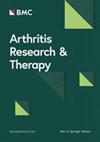Proteomic profiling of human plasma and intervertebral disc tissue reveals matrisomal, but not plasma, biomarkers of disc degeneration
IF 4.9
2区 医学
Q1 Medicine
引用次数: 0
Abstract
Intervertebral disc (IVD) degeneration is a common cause of low back pain, and the most symptomatic patients with neural compression need surgical intervention to relieve symptoms. Current techniques used to diagnose IVD degeneration, such as magnetic resonance imaging (MRI), do not detect changes in the tissue extracellular matrix (ECM) as degeneration progresses. Improved techniques, such as a combination of tissue and blood biomarkers, are needed to monitor the progression of IVD degeneration for more effective treatment plans. To identify tissue and blood biomarkers associated with degeneration progression, we histologically graded 35 adult human degenerate IVD tissues and matched plasma from the individuals into two groups: mild degenerate and severe degenerate. Mass spectrometry was utilised to characterise proteomic differences in tissue and plasma between the two groups. Top differentially distributed proteins were further validated using immunohistochemistry and qRT-PCR. Additionally, correlational analyses were conducted to define similarities and differences between tissue and plasma protein changes in individuals with mild and severe IVD degeneration. Our data revealed that the abundance of 31 proteins was significantly increased in severe degenerated IVD tissues compared to mild. Functional analyses showed that more than 40% of these proteins were matrisome-related, indicating differences in ECM protein composition between severe and mild degenerate IVD tissues. We confirmed adipocyte enhancer-binding protein 1 (AEBP1) as one of the most significantly enriched core matrisome genes and proteins as degeneration progressed. Compared to others, AEBP1 protein levels best distinguished between mild and severe degenerated IVD tissues with an area under the curve score of 0.768 (95% CI: 0.60–0.93). However, we found that protein changes from associated plasma exhibited a weak relationship with histological grading and AEBP1 tissue levels. Given that systemic plasma changes are complex, a larger sample cohort may be required to identify patterns in blood relating to IVD degeneration progression. In this study, we have identified AEBP1 as a tissue marker for monitoring the severity of disc degeneration in humans. Further work to link alterations in tissue AEBP1 levels to changes in blood-related proteins will be beneficial for detailed monitoring of IVD degeneration thereby enabling more personalised treatment approaches.求助全文
约1分钟内获得全文
求助全文
来源期刊

Arthritis Research & Therapy
RHEUMATOLOGY-
CiteScore
8.60
自引率
2.00%
发文量
261
审稿时长
14 weeks
期刊介绍:
Established in 1999, Arthritis Research and Therapy is an international, open access, peer-reviewed journal, publishing original articles in the area of musculoskeletal research and therapy as well as, reviews, commentaries and reports. A major focus of the journal is on the immunologic processes leading to inflammation, damage and repair as they relate to autoimmune rheumatic and musculoskeletal conditions, and which inform the translation of this knowledge into advances in clinical care. Original basic, translational and clinical research is considered for publication along with results of early and late phase therapeutic trials, especially as they pertain to the underpinning science that informs clinical observations in interventional studies.
 求助内容:
求助内容: 应助结果提醒方式:
应助结果提醒方式:


